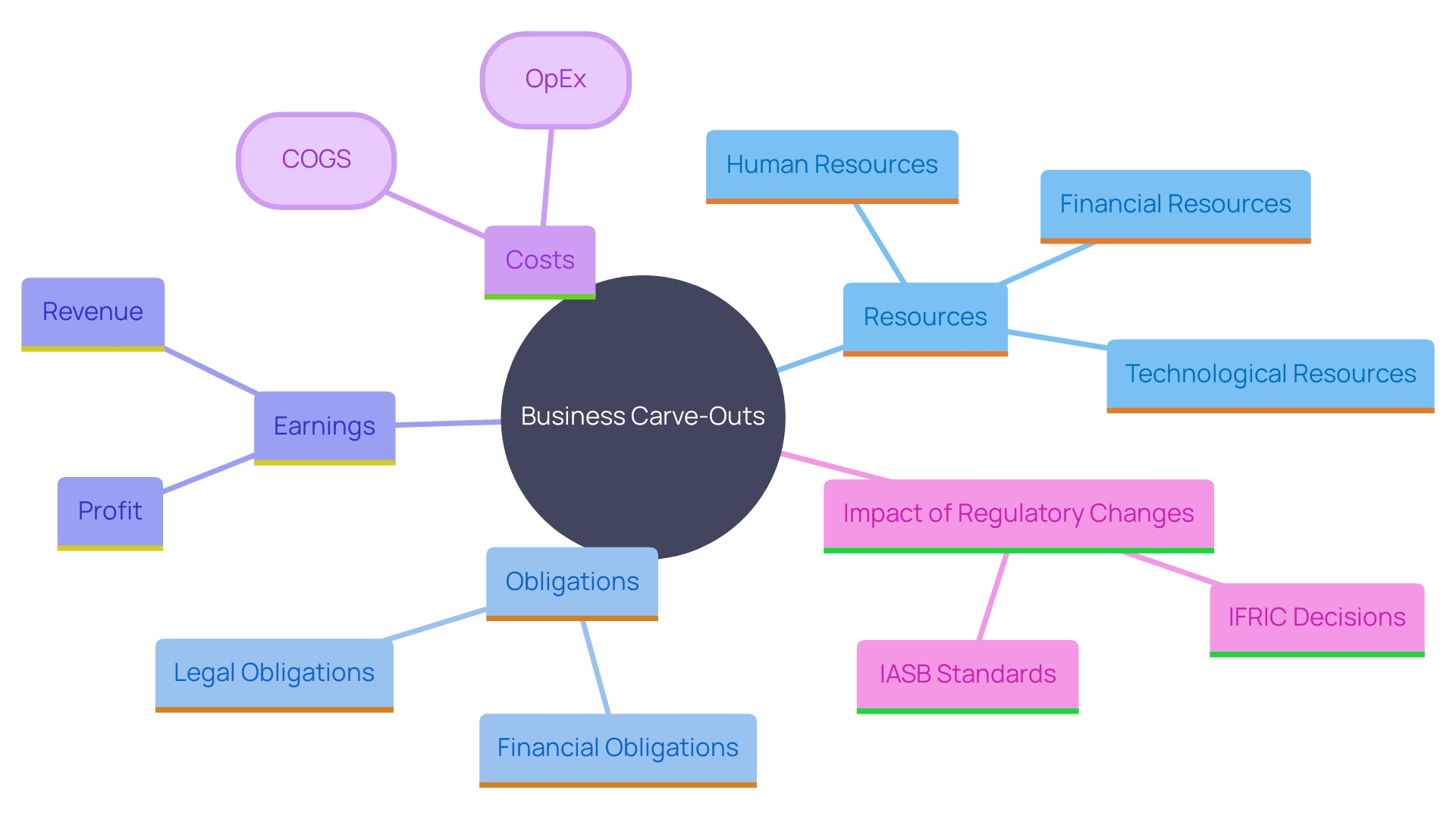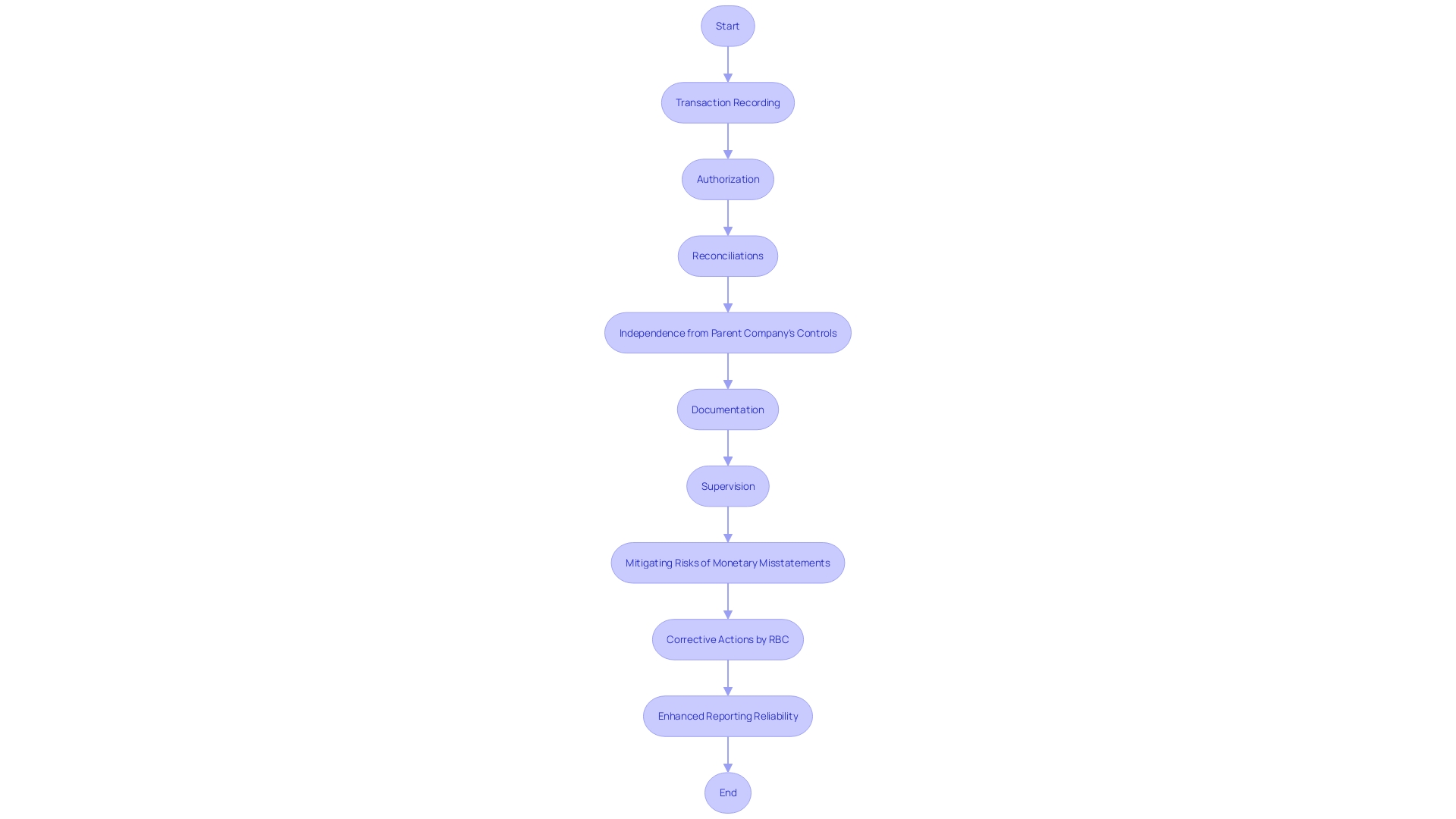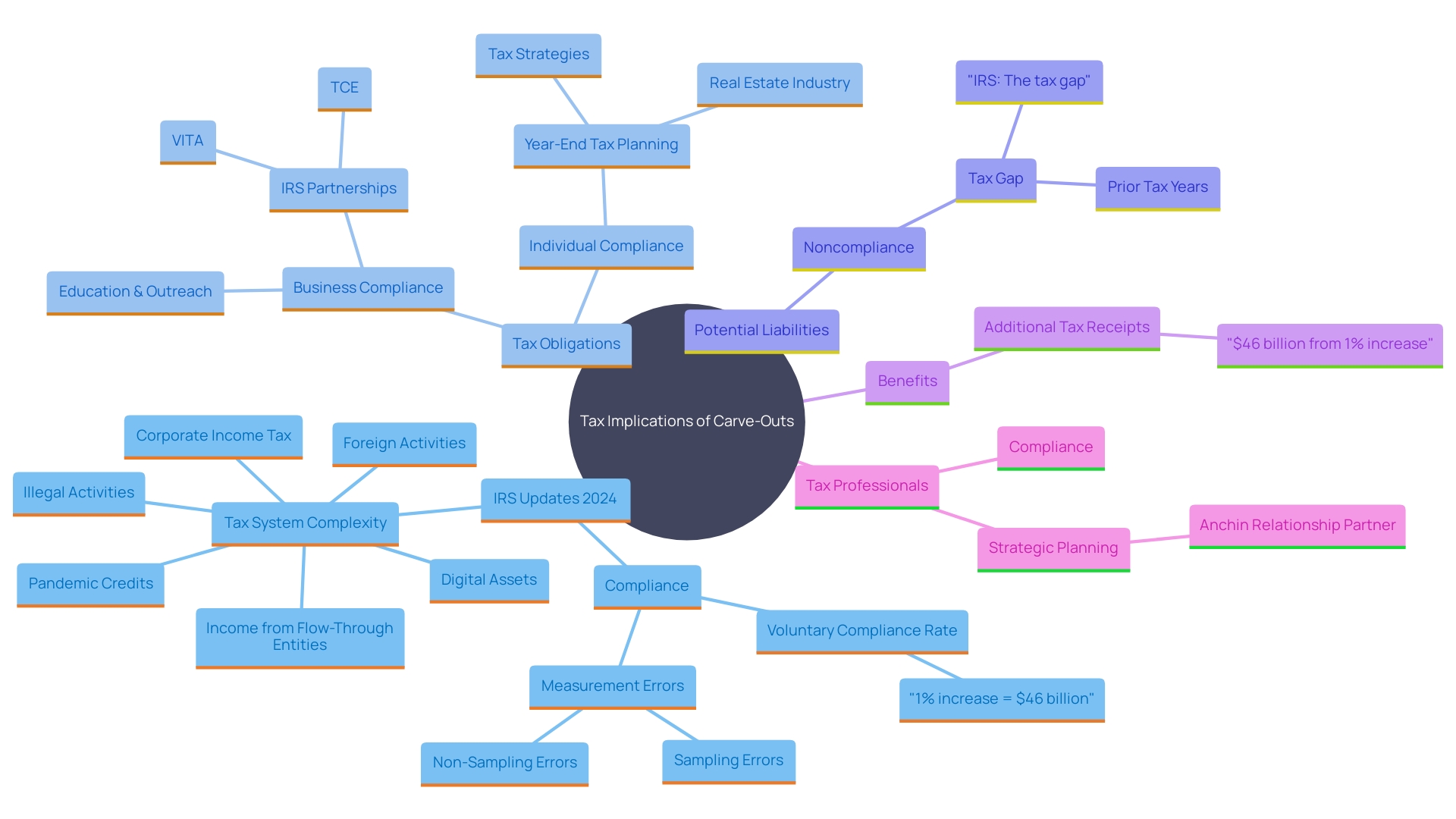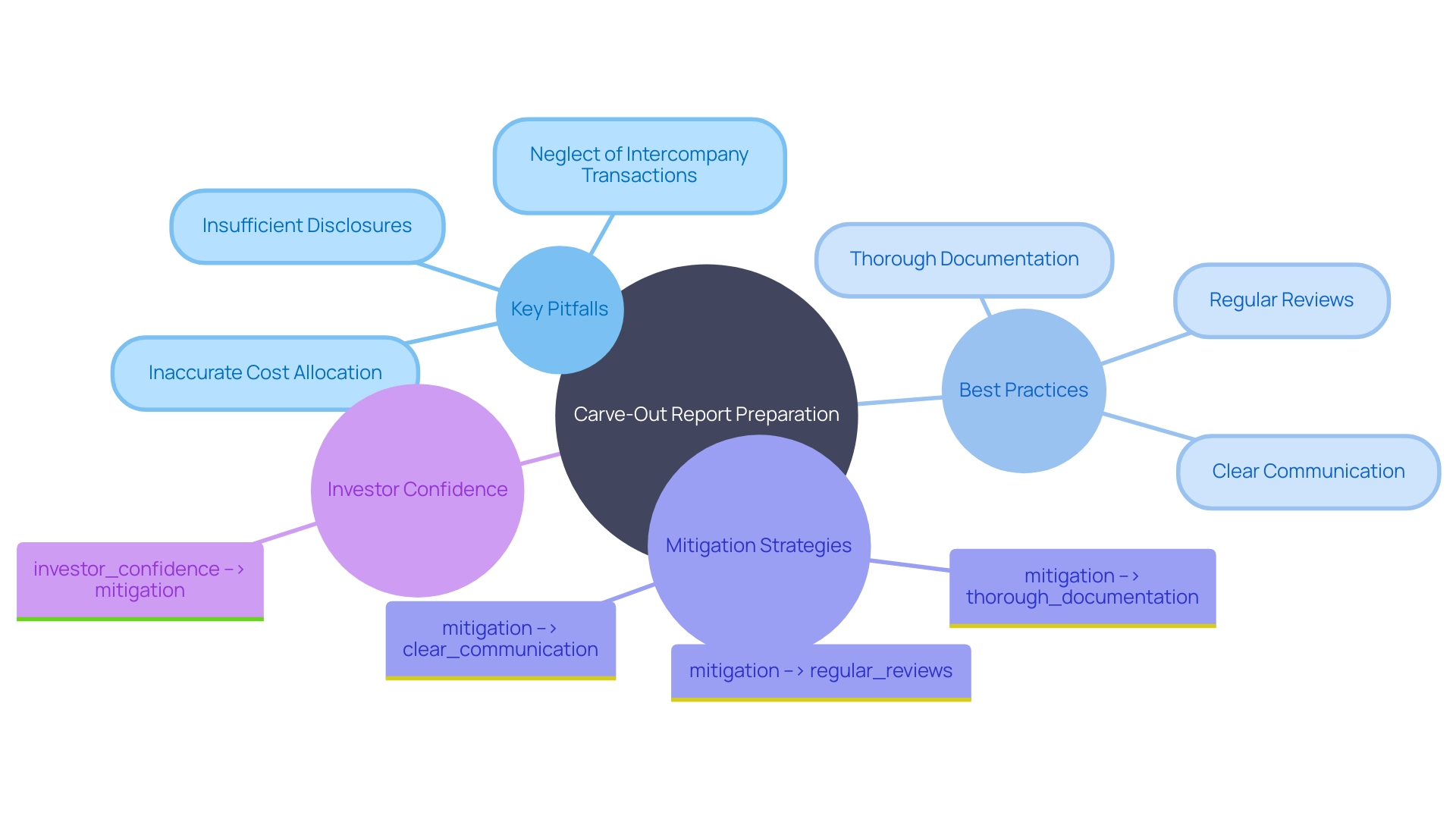Introduction
Navigating the complexities of preparing carve-out financial statements is crucial for CFOs aiming to present a transparent and accurate financial picture. A carve-out entity represents a distinct segment of a larger business, separated for operational or financial analysis. Understanding the boundaries of this entity, from specific assets and liabilities to revenues and expenses, is essential for precise financial reporting.
This article delves into the key considerations, including aligning accounting policies, establishing robust internal controls, and addressing unique tax implications. Additionally, it highlights common pitfalls and best practices, ensuring that stakeholders have a clear and honest view of the carve-out's financial health.
Defining the Carve-Out Entity
A segmented part of a larger business is designated for operational or economic assessment. Determining the limits of this entity is essential for precise reporting of accounts. This definition should include the specific resources, obligations, earnings, and costs that relate directly to the separation, ensuring clarity in accounting statements. As discussed in various business acquisition strategies, understanding the unique components of a carve-out is essential. For instance, a business's ability to generate cash flow and its operational efficiency in areas such as R&D and S&M can significantly impact its valuation and performance post-carve-out. Furthermore, regulatory updates, such as the upcoming SEC final rule on climate, may introduce new compliance requirements impacting reporting. It's essential to consider these elements to guarantee thorough and clear fiscal reports.

Key Considerations in Preparing Carve-Out Financial Statements
Preparing separated accounting reports requires careful consideration of the operational details of the entity. Key components include aligning accounting policies with the parent company, which ensures consistency and accuracy. Establishing the suitable foundation of accounting is essential, as it affects the monetary portrayal of the division. Moreover, it’s crucial that the monetary reports precisely depict the separation’s operational performance, avoiding any dilution from unrelated business activities. This accuracy ensures that stakeholders obtain a clear and truthful perspective of the separation's economic well-being, enabling improved decision-making and investment assessments.
Internal Controls for Carve-Out Financial Statements
Creating strong internal controls is essential for the integrity of carve-out fiscal statements. This requires setting up independent processes for transaction recording, authorization, and reconciliations, separate from the parent company's controls. For instance, during RBC's internal review, specific costs related to internally developed software were capitalized and recorded as intangible assets, meeting criteria for future economic benefits. Sufficient documentation and supervision are essential to reduce risks of monetary misstatements. As demonstrated by RBC's corrective actions, proactive measures are essential to prevent recurrence of such deficiencies and ensure dependable reporting.

Tax Considerations and Complexities in Carve-Out Financial Statements
Carve-outs often introduce unique tax implications that must be addressed during monetary preparation. It's essential to understand the tax obligations of the division, including potential liabilities or benefits stemming from the separation. This can help avoid unforeseen monetary impacts and ensure compliance with relevant tax regulations. The IRS's strategic plan for 2024 includes numerous updates and compliance requirements that could impact specialized organizations, such as changes to the standard deduction. For example, the deduction for married couples filing jointly will increase to $29,200. Such adjustments necessitate careful planning and adherence to new rules. Engaging tax professionals is crucial in navigating these complexities. They can provide routine tax advice and help organizations adapt their transfer pricing strategies to meet audit and compliance requirements. This proactive approach can prevent costly errors and maintain the entity's economic well-being.

Common Pitfalls and Best Practices in Preparing Carve-Out Financial Statements
Common pitfalls in preparing carve-out reports include the failure to accurately allocate shared costs, neglecting intercompany transactions, and insufficient disclosures regarding the carve-out’s monetary position. These issues can lead to a lack of comparability and transparency, ultimately affecting investor confidence. Best practices involve thorough documentation, regular reviews of allocation methodologies, and clear communication with stakeholders. Ensuring high-quality monetary reporting requires rigorous internal controls and adherence to professional care standards, similar to those applied to other fiscal statements. This approach helps investors make informed decisions by providing a clear and comparable financial picture.

Conclusion
The preparation of carve-out financial statements plays a pivotal role in offering a transparent and accurate representation of a distinct segment within a larger business. By defining the carve-out entity with clarity—encompassing specific assets, liabilities, revenues, and expenses—CFOs can ensure that stakeholders have a comprehensive view of its financial health. This clarity not only aids in operational analysis but also enhances the overall valuation and performance assessment post-carve-out.
Key considerations such as aligning accounting policies with the parent company and establishing robust internal controls are essential for maintaining the integrity of financial reporting. Attention to detail in these areas helps to accurately reflect operational performance while avoiding the dilution of financial data from unrelated business activities. Furthermore, understanding the unique tax implications that arise from a carve-out is crucial for compliance and financial planning, as evolving regulations may introduce new challenges.
Avoiding common pitfalls such as inaccurate cost allocations and insufficient disclosures is vital for maintaining investor confidence. Implementing best practices, including thorough documentation and regular reviews, reinforces the quality of financial reporting. By prioritizing these strategies, CFOs can effectively navigate the complexities of carve-out financial statements, ensuring that stakeholders are equipped with the information necessary for informed decision-making and investment evaluations.
The commitment to transparency and accuracy not only enhances the credibility of carve-out entities but also sets the stage for their future success.




